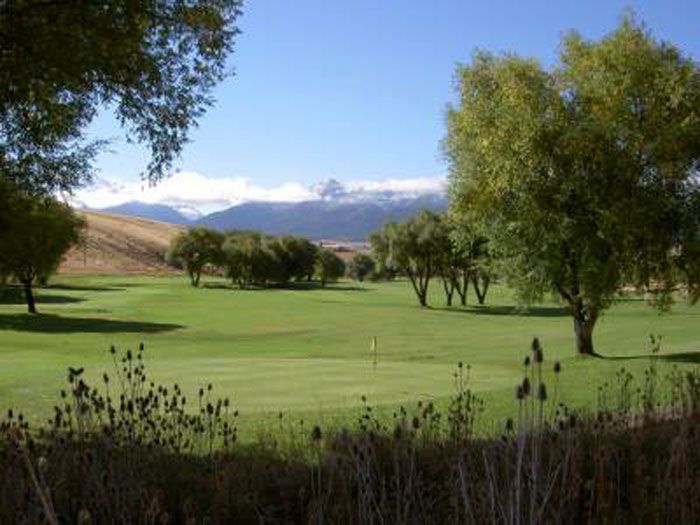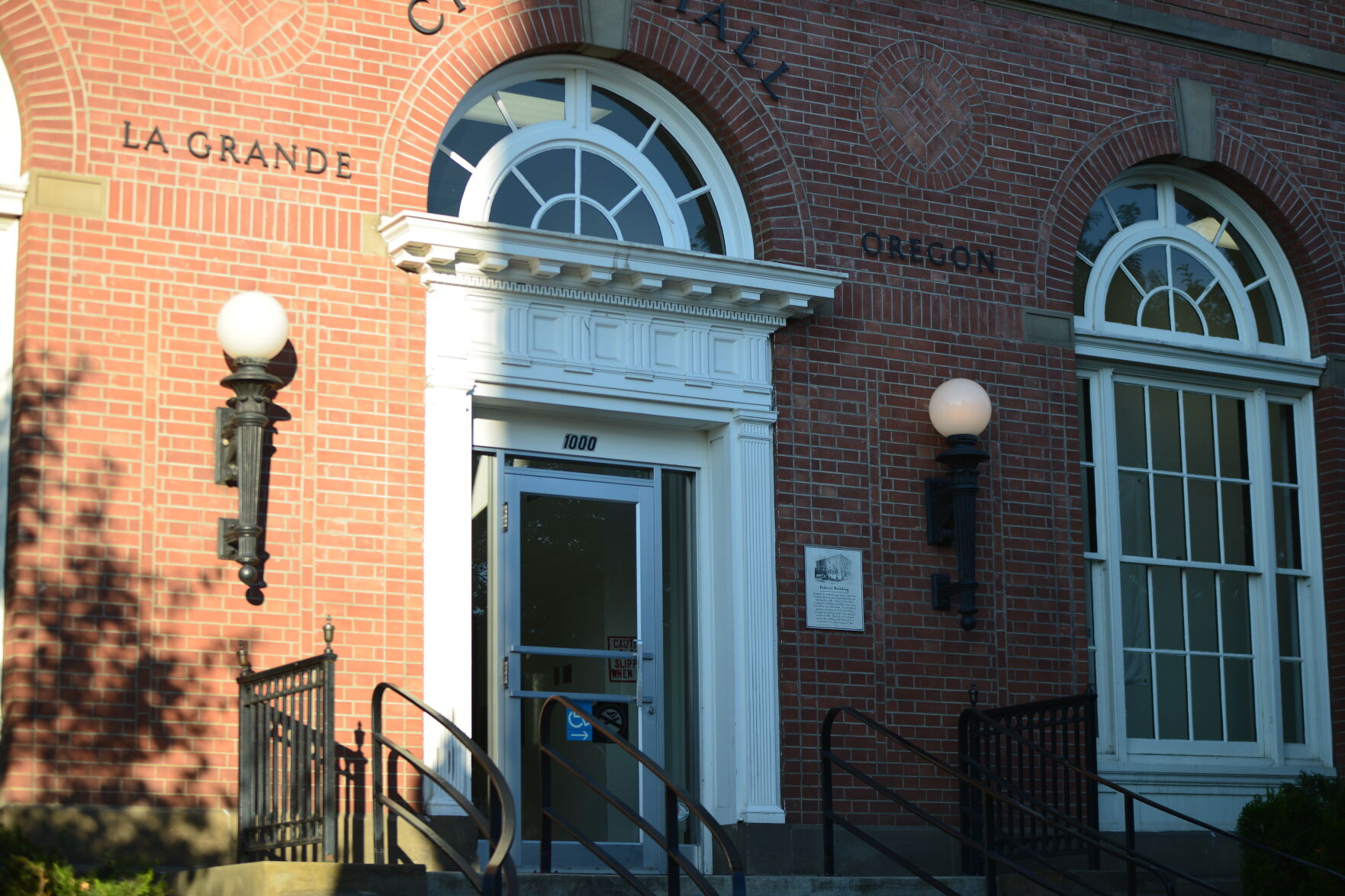The making of a golf course
Published 1:46 pm Monday, May 5, 2008

- Looking south from near the green on Hole 1 at Alpine Meadows. CONTRIBUTED PHOTO
ENTERPRISE – It didn’t take the likes of comedian Larry the Cable Guy
to tell Wallowa County golfers, who wanted to construct a golf course
in Enterprise, to “Git-er-Done.”
What it did take was the tenacity of numerous individuals, who, over a period of several decades, hunkered down and did ‘er.
Today, Alpine Meadows is the result of their enterprising spirit.
The idea for a course came about in the summer of 1917, when Enterprise Country Club members Ian MacDonald and R.J. Campbell – considered golf experts from the East – declared the property that lay two miles north of town ideal for the game.
The club applied for a state charter and contracted for the 43 acres owned by B.T. Long. The fledgling organization incorporated with capital stock of $5,000 and shares of $25 each.
The charter application came at a time when optimism flourished in the county, which estimated its population near 12,000. And Enterprise, being the site of East Oregon Lumber Co., a logging business that generated money and jobs, looked to a growth of 5,000 inhabitants.
It was also a time when golf, a game that had been played chiefly by people of wealth before 1913, had gained the attention of the broader American public.
In turn, it captured the attention of Wallowa Valley folks.
Printed in the Enterprise Record Chieftain, “… A four-hole course is available on club grounds. Everyday sees some golf students learning the game. There is a crop on part of the land, which can be of no use for golf until next year at the earliest. It will be plowed, harrowed and seeded this fall, and a good turf should form by early next summer. There is no brush to be cleared off, as what grows there will be permitted to remain. The ground will be pastured with sheep to keep grass down. More members are added to the club each week and the outlook is that it will have a full list before long.”
An excerpt from the paper two months later read, “… Golf has got a good start. The game has more than a score of followers already, who are seen morning and evening driving out to the alluring greens; and on street corners, men now stop and discuss their scores and how many strokes it took to get on the green at third hole, and what penalties they paid.”
The country club’s long-term goals in developing one of the best and most attractive courses in Eastern Oregon went by the wayside as Wallowa County’s optimism was replaced by the woes of war, loss of population and a “flu” scourge – not to mention, the Great Depression.
Sometime during those years the club relinquished its ownership. County records show the City of Enterprise
eventually purchased the property for $1 on May 5, 1943. The signature on the warranty deed belonged to Ella Clayton, who held the county treasurer’s job in the 1920s.
But during those two tumultuous decades the property remained a golf course.
Addie Marks, wife of the late Mark Marks, said her husband’s first contact with the sport came when he herded sheep on the site for Bailey Maxwell in 1935.
“When men from town came out to play, they asked him to join in,” she says. “Mark enjoyed golf nearly as much as he enjoyed his horses.”
Ray Milligan, retired owner of Milligan Motors, played the course between 1937-1939, along with Don McDaniel of Wallowa. In his teens at the time, Ray recalls that a hillside ditch, excavated for flood irrigation, ran parallel to the No. 6 fairway. With a chuckle, he says, “The course was pretty ragged.”
Bob Clegg, retired music director at Enterprise High, remembers that during the 1940s the No. 6 fairway served as a football field. “Our Baker High team dressed down at Enterprise and was transported to the painted grid.”
In further recollection, Clegg says, “During the late-’50s and mid-’60s, when our family lived in the two-story house on the course, Walt Myers, a city employee, earned $600 a year to mow the fairways and irrigate. I helped him move pipe.
“Before the B-24 bomber’s emergency landing in 1944, the putting greens were grass. In landing, the mammoth plane devastated the course from where its wheels touched down on what is now the ladies’ No. 3 tee, and again, in take-off on a make-shift runway of steel mats. In repairing the damage, sand greens replaced the sod.”
In the seven years the Cleggs occupied the premises, the city collected their rent, along with any green fees and sales from the soft drink machine. “We were the next best thing to a clubhouse,” says Jim, the oldest of the four Clegg siblings.
Course enhancement became an issue as more people played. Golfers contributed evening time and planned weekend workdays. What had been described as a humble course showed a renewed sense of pride.
“In addition to the greens keeper,” says Frank Hays, past co-owner of once H and H Furniture, “volunteers mended fences and strung new ones, welded irrigation pipe and raked leaves and limbs.”
George Justice, who celebrated his 90th birthday last year, said, “We stole sand from the railroad tracks out near the old stockyards, mixed it with oil and dumped it on the greens. A large square of carpet secured to a long metal handle was used to drag across the sand. It was hard work so no-one wanted to mess it up.” With a twinkle in his eyes, he confessed, “I couldn’t putt for beans.”
“Caddies swept the greens during tournaments,” says Joyce Hays. “In regular play we ladies made our own repairs so we attempted to putt from the same area, and walk in each other’s footsteps.”
Jack Harmon, son of H.O. Harmon, recalls the first Elks Golf Tournament when he, along with Ray Milligan and the late George Thompson, advertised the invitational with “Play golf at the Badger Hole and Babbling Brook Golf Course.”
Vi Kreizenbeck Harmon remembers. “When we played the No. 6 fairway, badgers, ground squirrels and rabbits eyed us from the hillside. I half expected them to applaud when I hit a good shot.”
The strong belief that Wallowa County would benefit from a golf course showed itself mightily when the city decided to sell the land. A dozen or so businessmen/golfers went before the city council – more than once – to sell their story.
In 1966, the newly formed Wallowa Valley Golf Association succeeded in their quest and signed a 30-year lease/contract agreement.
With the efforts of the late Harold Haller, who served as president of Northeast Oregon Vacationland, the golf association secured a $50,000 FHA loan.
With the money a transformation of the links proceeded.
Boise Cascade’s road building crew, with Bill Patterson, the company’s general manager, at the wheel, and a three-day window to Git-er-Done, the land was cleared, moved, dug and leveled. Greens were redesigned, tee boxes modified and sod replaced sand. Included in the reconstruction, a new clubhouse was erected.
Today’s nine-hole public golf course, with amenities that include a pro shop, driving range, practice putting green and rental carts, benefits an ever-growing population of golfers. The easily accessed course not only appeals to local players and vacationers, but to the county’s exuberant youth.
Managers Kenny and Sue Storm, who have a habit of making golfers feel welcome, serve food and refreshments in the clubhouse restaurant. Try a “Kenny, the Chef” barbecued pork sandwich, along with a glass of lemonade. The combination is guaranteed to take strokes off your game.
With all its amenities, Alpine Meadows also holds a variety of natural beauty. Its lush, green fairways are nestled within a gorge rimmed in basalt, where eagles soar and native prairie grasses grow. Although the great pine trees are gone, young fir and older black willow shade Trout Creek and add a challenge to the fairways.
On the banks of the meandering waters where fish jump and golf balls disappear, deer graze, birds chirp and ducks waddle … then of course, there are those wondrous Wallowa Mountains.
So, Get ‘er Done. Come play Alpine Meadows. It’s the perfect place for the game.
Alpine Meadows fast facts
andbull; In 1944, during World War II, the golf course served as a life-saver to the 10 crewmen aboard the B-24.
andbull; Its golfing turf sufficed as a camp for the 160 engineers from Walla Walla’s military base who secured the site and dismantled non-essential parts from the plane to lighten it for take-off.
andbull; The camp, besides serving as sleeping quarters, gave the engineers a chance to sharpen their skills against the unseen enemy when awakened in the night by a loud racket – Wallowa County coyotes howling at the moon.
andbull; Sgt. Bradford Botts, a native of Flora and top gunner on the B-24 Liberator, didn’t have any idea where he was until he disembarked the aircraft.
andbull; In 1977, Bob Clegg, in retirement, served as grounds superintendent for 17 years. He also chaired several Junior Golf Tournaments.
andbull; In the spring of 1958, while hunting golf balls along Trout Creek, Jim Clegg fell into the high water and was rescued from drowning by his younger brother Ron.
andbull; In recent years, the Enterprise High cross country team holds annual meets on the grass.
andbull; In 2007, the Amy Sturtevant-Chad Stangel wedding and reception glamorized the site.





